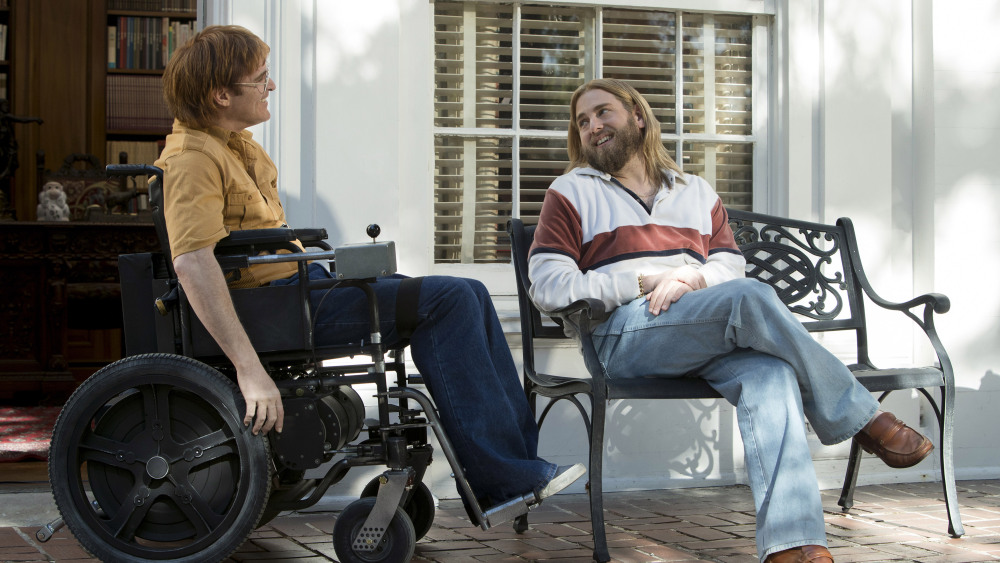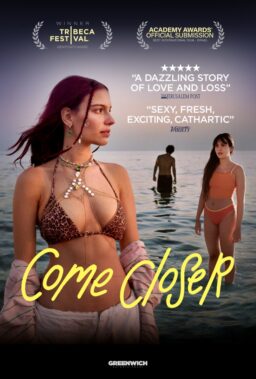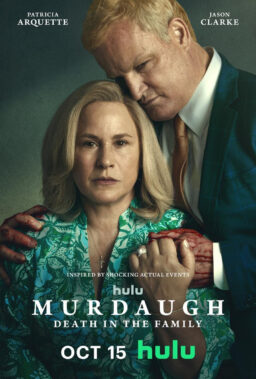Drink is good, drunks are not; there’s much more to wrestle with than this in Gus Van Sant’s new film, but it’s a decent starting point. “Don’t Worry, He Won’t Get Far on Foot”—in competition at this year’s Berlinale after premiering at Sundance last month—is a curious adaptation of the same-name autobiography by John Callahan (1951-2010), an alcoholic who, following a drunk-driving accident at the age of 21, spent the rest of his life as a quadriplegic. Played here by Joaquin Phoenix, Callahan also became a notable cartoonist for, among other publications, the Portland newspaper Willamette Weekly.
Van Sant’s film is fascinating for many reasons. To begin with, there’s the concept. Like junkies, drunks seldom make for interesting drama, and much the same goes for onscreen depictions of creative processes (there’s a reason why Terry Zwigoff’s “Crumb” was a documentary); so writing and directing a compelling film about an alcoholic cartoonist makes for doubly difficult work. There’s an understated experimentation at play in “Don’t Worry,” however: its tonal messiness, and its matter-of-fact scene-to-scene ellipses, become chief virtues in what feels at times like a refreshing response to traditional triumphal arcs. Ditto Phoenix, who seems fundamentally miscast and/or barely interested in making Callahan a believable or likeable guy—which somehow ends up being part of the package.
This is a film, after all, about coming to terms with the consequences of destructive lifestyle choices and addictions that don’t have easy resolutions. Even the film’s ostensible use of the 12-step recovery program as a second-half structuring device seems tellingly half-hearted. Callahan’s repeated reference to being abandoned by his mother and subsequently adopted is simultaneously a hard fact and an easy excuse—as pointed out by sponsor and fellow alcoholic Donnie (Jonah Hill), a rich-kid tough-love Jesus lookalike whose guidance treads a fine line between accidentally insightful wisdom and surprisingly blunt remonstrating. There’s a twisty, uneasy dialectic at work: Callahan doesn’t just drink because of what’s happened to him, he also does things because he drinks.
Van Sant tends not to do drama so well—no coincidence that his best films, “Gerry” (2001), “Elephant” (2003), and “Last Days” (2005), are deliberate exercises in outright avoiding it—and so it’s to his credit that his script emphasizes the darkly comic threads of what is often brutally sad material. It might seem obvious to say, but a film like this about a guy like this is allowed to be funny, from slapstick bathos such as the sight of Callahan falling into a bush after botching a skateboard maneuver in his motorized wheelchair, to visually depicted fantasies of a nurse sitting on his face (and absolutely loving it). Like Callahan’s often controversial cartoons, the film is all the better for its eschewal of facile causality. Like it or not: make no apologies.
Speaking of productive lifestyle choices, I see less and less competition films each year in Berlin—and consequently enjoy the festival experience more and more. My sections of choice this year were Forum and Forum Expanded, the former boasting new works by Hong Sangsoo, Sergei Loznitsa, and Claire Simon, and the latter hosting premieres of films by the likes of Heinz Emigholz and Deborah Stratman.
Writing from Berlin for this publication two years ago, I described Stratman’s “Illinois Parables” in terms of its “carefully structured focus on the various themes that emerge from and interconnect through the history of a single territory,” and as a “place-portrait boasting charged landscape after charged landscape.” “Optimism,” her new fifteen-minute short, is a similarly toned response to place, in this instance Dawson City in Yukon, Canada—setting of Chaplin’s “The Gold Rush” and Bill Morrison’s recent documentary “Dawson City: Frozen Time.”
While Morrison’s documentary centered on the 1978 discovery of remarkably preserved silent film reels under permafrost, Stratman’s film is all about the gold: its extraction, its properties, its symbolic and actual value, its position and meaning in a history of excavation and labor. And more: I loved the film’s textures, its grain, the snowy terrain. But it’s also the kind of film that’s about things other than what it seems to be about; as with “The Illinois Parables,” I’ll be seeking another opportunity as soon as possible to revisit the work and figure out new depths.
Landscapes astound—if you let them. In James Benning’s “L. Cohen,” which is screening as a looped installation in an ongoing Forum Expanded exhibition, the veteran avant-garde filmmaker trains his eye on a nondescript oil field in Oregon. This is an ostensibly uneventful film even by Benning’s standards: a 45-minute tripod-fixed single take divided into green grass and blue sky; in the hazy far distance, we see the snowy peak of Mount Jefferson. Benning is audible behind the camera (little shifts in feet, as if he’s waiting for something to happen), drawing attention to the frame as a constructed image and to the viewing (and listening) process as a mediated, participatory act.
To what end? Only the single most powerful moment in any moving-image work I saw at this year’s Berlinale. It’s like a shock-cut but it isn’t, a cosmic alignment of contingencies that absolutely transforms the image and the texture and the meaning of this natural/manmade landscape, as the stratovolcano on the horizon is changed into a silhouette against a blood-orange Lotte Reiniger-esque backdrop. Benning does day for night: it’s a solar eclipse and it’s stunning.











